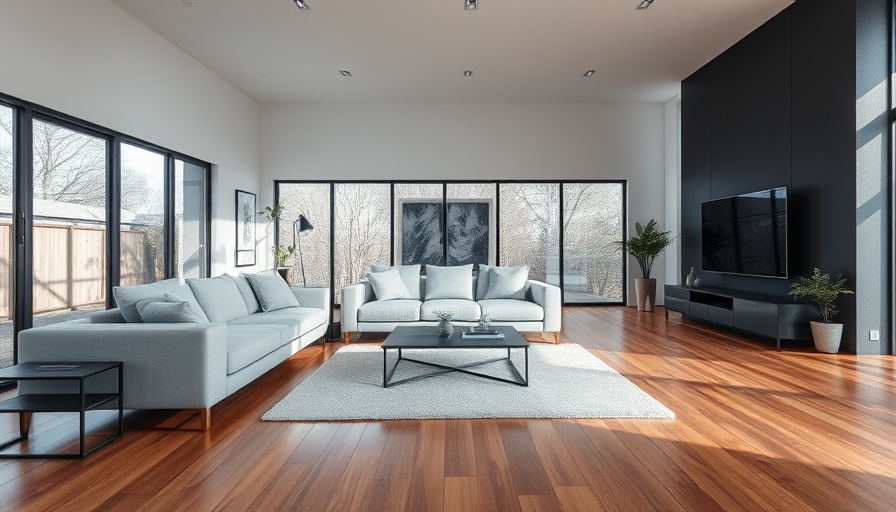
Why Paint Colors Matter in Real Estate
When it comes to selling a home, its curb appeal can be as influential as its interior features. According to recent insights from Zillow, the shades you choose for your walls can significantly affect how much buyers are willing to pay. While you might enjoy a bright purple library or a trendy avocado green kitchen, potential buyers could feel differently. The right colors not only enhance aesthetic appeal but can also create a sense of warmth, comfort, and luxury—all factors that increase perceived home value.
Discovering the Power of Neutrals
Real estate experts unanimously agree: neutral tones are a safe bet for potential buyers. Soft beiges, warm grays, and gentle whites cater to a broader audience, allowing future homeowners to envision their own style in the space without feeling overwhelmed. Zillow's data shows that homes with these colors tend to sell for more, making them a smart choice for those looking to boost their home’s value without intimidating potential buyers with bold hues.
The Impact of Color Psychology
Color psychology is a fascinating field that informs much of the color selection in homes today. For instance, blue is often associated with calmness and serenity, making it a beloved choice for bedrooms and bathrooms. When buyers step into a powder blue room, they may already be picturing themselves relaxing in a space that feels inviting and tranquil. Whereas, vibrant colors like reds and yellows can stimulate activity but may deter some buyers who find them overwhelming or difficult to match with furniture.
Trendy Color Choices That Sell
While neutrals reign supreme, certain trend-inspired colors can also add value if chosen wisely. For example, earthy greens echo the connection to nature and promote a sense of health and sustainability—an appealing choice in today's environmentally conscious market. Zillow suggests shades like sage and olive green not only appeal to modern sensibilities but also align with the growing trend of eco-friendliness in design.
Common Misconceptions About Home Painting
Many homeowners believe that more color means more character, yet this can often lead to the opposite effect. A home filled with contrasting colors can easily feel chaotic rather than charming. Consumers and realtors alike advocate simplified color schemes that make spaces appear larger and cleaner. The goal is to create a canvas that invites future inhabitants to make the space their own.
The Financial Implications of Choosing Wisely
Investing in quality paint and thoughtful color schemes pays off when it comes time to sell. Zillow reports that certain shades can add thousands to a home's resale value. Homeowners should consider these financial implications when embarking on a painting project, particularly if they're preparing their home for sale. A small investment now in paint can lead to a significant return in terms of value later.
Tips to Enhance Your Home’s Palette
Want to maximize your home’s allure? Here are some tips to guide your color choices:
- Stick to a Theme: A cohesive color palette throughout the house creates harmony.
- Sample Before You Commit: Test paint on small patches before painting entire rooms.
- Consider Lighting: Natural and artificial lights can change how colors look, so examine your selections at different times of the day.
Conclusion: The Bottom Line on Paint Colors
Choosing paint colors is an art influenced by psychology, trends, and real estate market values. Armed with data from Zillow and an understanding of buyer preferences, homeowners can make strategic choices that not only beautify their ispace but also enhance its market value. Next time you consider repainting, think like a homeowner, not just an artist—it could mean the difference between selling and lingering on the market.
 Add Row
Add Row  Add
Add 



 Add Row
Add Row  Add
Add 


Write A Comment